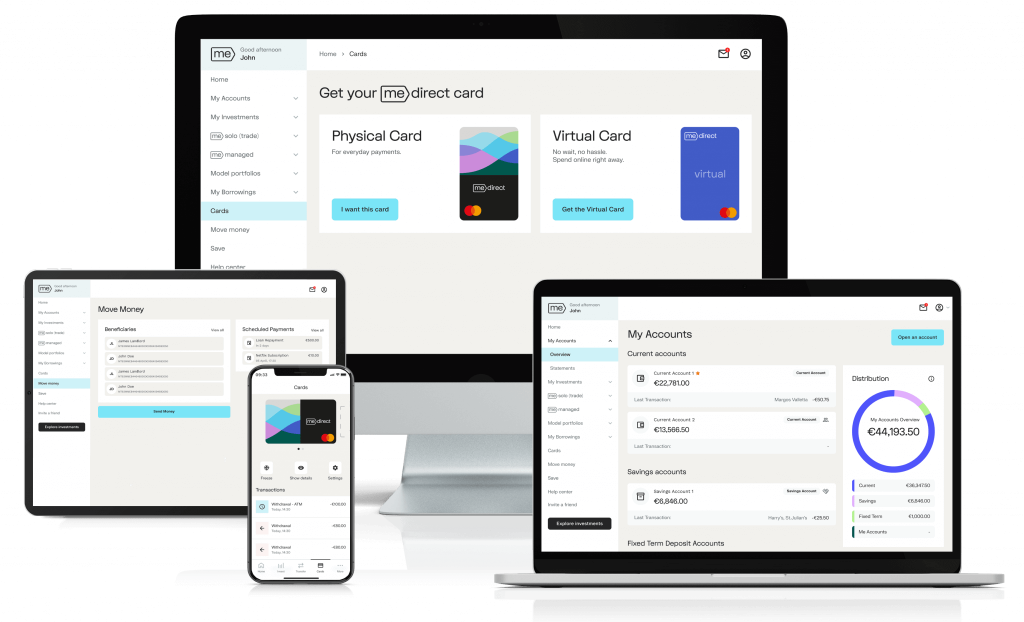 |
An article written by Ray Calleja: Head – Private Clients, MeDirect |
In the preceding two articles we discussed how to measure the risks and returns involved with any mutual fund. A number of ratios have been developed that make it possible to accurately quantify the relationship between risk and return. These include a mutual fund’s volatility (standard deviation), how closely it mirrors a particular market index (R2), its volatility compared with that market index (Beta); how much the funds risk-adjusted return is attributable to its manager (Alpha) and compared the return of a mutual fund with the volatility (the Sharpe ratio). We also discussed the Morningstar ratings of a fund, which provide an assessment for its past performance and also its future outlook through the Analyst rating.
But before buying a fund, an investor must also find out what the fund owns and how it invests. Knowing what a fund owns helps you understand its past behaviour, set realistic expectations for what it might do in the future, and figure out how it will work with the other investments that you might own already. A fund can own equities, bonds, cash or a combination of the three, not to mention other securities. A fund’s name does not always reveal what a fund owns because funds often have generic names.
Morningstar Style Box
The need to help investors choose funds based on what they really own instead of depending on the name of the fund or how they classify themselves or how they have performed recently was what made Morningstar develop its investment style box in 1992. The Equity Style Box is a nine-square grid (please see figure below) that classifies securities by size along the vertical axis and by value and growth characteristics along the horizontal axis. Different investment styles often have different levels of risk and lead to differences in returns. Therefore, it is crucial that investors understand style and have a tool to measure their style exposure.
Using the Equity Style Box
In general, a growth-oriented portfolio will hold the equities of companies that the portfolio manager believes will increase factors such as sales and earnings faster than the rest of the market. A value-oriented portfolio contains mostly stocks the manager thinks are currently undervalued in price and will eventually see their worth recognized by the market. A blend portfolio might be a mix of growth stocks and value stocks, or it may contain stocks that exhibit both characteristics.
The Morningstar Style Box helps investors construct diversified, style-controlled portfolios based on the style characteristics of all the stocks and funds included in that portfolio. They are updated every month and are recalculated whenever Morningstar receives updated holdings for the portfolio.
The Style Box also forms the basis for the style-based Morningstar Categories and market indexes.
The Equity Style Box captures three of the major considerations in equity investing: size, equity valuation and equity growth. Value and growth are measured separately because they are distinct concepts. A stock’s value orientation reflects the price that investors are willing to pay for some combination of the stock’s anticipated per-share earnings, book value, revenues, cash flow, and dividends. A stock’s growth orientation is independent of its price and reflects the growth rates of fundamental variables such as earnings, book value, revenues, and cash flow. When neither value nor growth is dominant, stocks are classified as “core” and portfolios are classified as “blend.”
Morningstar uses a flexible system that isn’t adversely affected by overall movements in the market. World equity markets are first divided into seven style zones:
- United States
- Latin America
- Canada
- Europe
- Japan
- Asia Excluding Japan
- Australia and New Zealand
The equities in each style zone are further subdivided into size groups. Giant-cap stocks are defined as those that account for the top 40% of the capitalization of each style zone; large-cap stocks represent the next 30%; mid-cap stocks represent the next 20%; small-cap stocks represent the next 7% and micro-cap stocks represent the smallest 3%.
For value-growth scoring, giant-cap stocks are included with the large-cap group for that style zone, and micro-caps are scored against the small-cap group for that style zone.
Horizontal Axis
The scores for a stock’s value and growth characteristics determine its horizontal placement. There are five value factors and five growth factors, as per table below:

The five value and five growth characteristics for each individual equity are compared to those of other equities within the same scoring group (e.g. Europe large-caps for style zone and size). Equities are then assigned Overall Value and Overall Growth scores based on the ten factors. If either growth or value is dominant, the equity is classified accordingly. If the scores for value and growth are similar in strength, the equity is classified as “core.” On average, the three equity styles each account for approximately one-third of the total capitalization in each scoring group.
An equity fund or portfolio is an aggregation of individual equities and its style is determined by the style assignments of the equities it owns. Style Box assignments for portfolios are based on the asset-weighted average of the style and size scores of the underlying stocks or equities. Few or no portfolios contain only stocks with extreme value-growth orientations, and both value and growth managers often hold core stocks for diversification or other reasons. Therefore, for portfolios, the central column of the Style Box represents the “blend” style (a mixture of growth and value equities or mostly core equities).
The Fixed Income Style Box
The Fixed Income Style Box is a similar nine-square grid and is listed for fixed-income funds. The data focuses on the two pillars of fixed-income performance: interest-rate sensitivity and credit quality. Morningstar splits fixed-income funds into three duration groups: Limited (Ltd), less than 3.5 years; Moderate (Mod) from 3.5 to 6 years; and Extensive (Ext), more than 6 years; and three credit-quality groups: High- (H), Medium- (M), and Low-quality (L).
These groupings display a portfolio’s effective duration and credit quality to provide an overall representation of the fund’s risk, given the length and quality of bonds in its portfolio. As with equity funds, nine possible combinations exist, ranging from short duration/high quality for the safest funds to long duration/low quality for the riskiest.
The style box for fixed-income funds offers a different interpretation on the way a fund house or company chooses to position a fund, such as by its name or marketing material. Style data relies upon the fund’s actual holdings, and therefore often proves to be a more accurate assessment of a fund’s investment approach.
The horizontal axis focuses on interest-rate sensitivity, as measured by the bond’s portfolio duration. (If duration is not available, the horizontal axis is based on the portfolio’s average effective maturity of the bonds in the fund.) Taxable Bond funds with durations of 3.5 years or less are limited; more than 3.5 years and less than six years, moderate; and more than six years, extensive. (Funds with an average effective maturity of four years or less qualify as limited; more than four years and up to 10 years, moderate; and more than 10 years, extensive.) Funds made up of municipal bonds (mainly used in the US and are issued by a local government) have a different classification.
It is important to note that fixed-income style data is useful for evaluating only the bond portions of a fund’s portfolio. Thus, funds with a significant mix of stocks, bonds, and cash may have a substantial portion of their portfolios left out of the fixed-income style data. Consequently, they will be given both equity and fixed-income style data. Fixed income style boxes are also updated on a monthly basis.
Credit Rating
Those bonds, which have an average credit rating of AAA and AA are categorized as high quality (H). Bond portfolios with average ratings less than AA but greater than or equal to BBB are medium quality (M) and those rated below BBB are categorized as low quality (L). For the purposes of Morningstar’s calculations, U.S. government securities are considered AAA bonds, non-rated municipal bonds are classified as BB, and all other non-rated bonds are labelled B.
While Equity funds usually run the range of possible style combinations, with funds from each objective varying greatly, Fixed-income funds, on the other hand, favour certain combinations over others. For example, there are far more extensive and moderate-maturity funds than limited-maturity funds, and far more funds boast high or medium credit quality than low quality.
It follows that bond funds with limited interest-rate sensitivity and high credit quality are less risky than those which venture into longer-duration and/or lower-quality bonds.
Morningstar Style Boxes for Equities and Fixed Income:
In conclusion, the Morningstar style box immediately helps to give you an insight into the fund manager’s investment strategy. A growth portfolio will mostly contain higher-priced companies that the manager believes have the potential to increase earnings faster than the rest of the market. A value orientation, on the other hand, means the manager buys equities that are cheap, but that could eventually see their worth recognized by the market. A blend fund will mix the two investment styles together. We have discussed risk at length but the style box can also give you an idea on what sort of risks the fund exposes itself to. A fund that owns smaller, more expensive stocks is bound to be more volatile than one holding large, well-known and established names. And the style box allows you to quickly see where a fund’s portfolio lands.
Sector Weightings Report
The style box is a good tool for getting a snapshot of a fund’s investment style but there are other portfolio statistics which reveal additional insights and more information about a fund’s risk and return potential. One such report is the Sector Weightings.
In 2011, Morningstar introduced a new sector structure which makes it more logical and easier to understand the decisions being made by the fund managers. It divides the stock universe into three “super” sectors – cyclical, sensitive, and defensive. Within these super sectors, they sub-divide the defensive sector into three groups and four groups each for the cyclical and sensitive sectors for a total of 11 sectors. Industry groups and specific industries within each sector permit further analysis, resulting in a unified system that applies to stocks, funds, and portfolios. Investors can quickly evaluate the similarities and differences of funds and portfolios by comparing exposure to the three Super Sectors, but they can also further examine holdings at a very granular level. Building on this structure, in 2019, Morningstar revised the industry group and industry level in response to market and technology changes. The revised system calibrates the classifications to align more closely with industry standards, clarifies industry definitions, and better reflects industry trends to allow for a more accurate grouping of companies based on market behaviour.
The Cyclical Super Sector includes industries significantly affected by economic shifts. When the economy is prosperous, these industries tend to expand, and when the economy is in a downturn they tend to shrink. In general, the stocks in these industries have betas of greater than 1.
The Defensive Super Sector includes industries that are relatively immune to economic cycles. These industries provide services that consumers require in both good and bad times, such as healthcare and utilities. In general, the stocks in these industries have betas of less than 1.
The Sensitive Super Sector includes industries that ebb and flow with the overall economy, but not severely. Sensitive industries fall between defensive and cyclical, as they are not immune to a poor economy, but they also may not be as severely affected as industries in the cyclical Super Sector. In general, the stocks in these industries have betas that are close to 1.
Platform Structure
The platform structure is a single, unified scheme, with the Morningstar equities universe forming its base. These equities are mapped into their appropriate industries, and the industries themselves are mapped into industry groups. These industry groups are then rolled into sectors. Finally, the sectors are consolidated into Super Sectors, as explained above.

Each equity is mapped into one of 145 industries, the one that most accurately reflects the company’s underlying business. This mapping is based on publicly available information about each company found in the annual reports, and Morningstar Equity Analyst input as its primary source. Secondary sources of information may include company websites, research, and trade publications.
Industries are subsequently mapped into 55 industry groups based on their common operational characteristics. If a particular industry has unique operating characteristics or lacks shared characteristics with other industries, it would map into its own group. However, any industry group containing just a single industry does not necessarily imply that that industry is dominant or otherwise important. It simply reflects the lack of a sufficient number of shared traits among the other industries.

Morningstar calculates a fund’s sector exposure based on the amount of assets it has in stocks in each sector. By knowing how heavily a fund invests in a given sector, you will know how vulnerable it is to a downturn in that part of the market or how much sector risk it is taking on.
By and large, equities are mapped into the industries that best reflect each company’s largest source of revenue and income. If the company has more than three sources of revenue and income and there is no clear dominant revenue or income stream, the company is assigned to the conglomerates industry. Descriptions, assets, and competitors are all considered when revenue does not paint a clear picture. Morningstar may change industry assignments to more accurately reflect the changing businesses of companies and all the companies are reviewed at least once annually and whenever there are major corporate actions for them.
Number of Holdings and Trading Behaviour
Knowing the number of equities, a fund owns can be just as important as any of the other factors we have discussed. Whether your fund holds 20 equities or a hundred will make a big difference in its behaviour. If you have a fund with only a handful of equities, it is likely to see a lot more turnings (up or down) in its performance than a fund which holds plenty of equities. The latter is likely to have little impact on the fund’s total return if, for example, one of its equities has taken a turn for the worse.
The number of holdings in bond funds tends to have less of an impact on how they behave. Nevertheless, a bond fund with more holdings is likely to be less volatile than one that is more concentrated in bonds from a smaller number of issuers. A bond fund is considered to be particularly risky if it invests in lower-quality bonds and also concentrates in a short list of holdings.
Information on the total number of holdings along with details of the top holdings of a fund, as well as the Style-Box and Sector Weightings are all available for any mutual fund in the Morningstar factsheet, which can be downloaded from the MeDirect website.
Turnover rate is another important aspect to consider when examining a fund’s style. It measures how much the portfolio has changed during the past year and shows approximately how long a fund manager typically holds a stock. To get the turnover of a fund all you have to do is divide the fund’s total investment sales or purchases (whichever is less) by its average monthly assets for the year. The turnover rate, which must be included in the fund’s annual report, can tell you whether a manager tends to buy and hold equities for the long term or frequently trading in and out of such equities. Typically, equity funds have a 100% turnover rate. Managers who keep a low turnover often practice low-risk strategies, whereas high-turnover funds indicate an aggressive and riskier approach. Growth-oriented fund managers often employ high-turnover strategies while the more value-conscious ones tend to be more patient with the holdings in the fund.
High-turnover funds tend to incur higher expenses in terms of capital gains tax during the selling of equities. Also, if the fund is relatively large any disposal of equities is bound to be significant in the market where it trades and so offering a large number of shares is likely to adversely affect the price of the equity and may have to accept a lower price. This would ultimately impact the fund’s shareholders. Most people will look for equity funds with a turnover rate of lower than 50%.
Many bond funds employ short-term trading strategies that step up their turnover rates but do not meaningfully affect their risk levels, tax efficiency or trading costs.
It is always a useful exercise to know what you are holding in your mutual funds and how they combine to give a bigger picture. If you keep track of your portfolio and have a preference for some sectors over others, the Morningstar Style-Box and Sector Weightings are simple but useful tools to help you determine your overall asset allocation.
The above is for informative purposes only and should not be construed as an offer to sell or solicitation of an offer to subscribe for or purchase any investment. The information provided is subject to change without notice and does not constitute investment advice. MeDirect Bank (Malta) plc has based this document on information obtained from sources it believes to be reliable but which have not been independently verified and therefore does not provide any guarantees, representations or warranties.
MeDirect Bank (Malta) plc, company registration number C34125, is licensed by the Malta Financial Services Authority under the Banking Act (Cap. 371) and the Investment Services Act (Cap. 370).
The financial instruments discussed may not be suitable for all investors and investors must make their own informed decisions and seek their own advice regarding the appropriateness of investing in financial instruments or implementing strategies discussed herein.
If you invest in any of the products discussed you may lose some or all of the money you invest. The value of your investment may go down as well as up. A commission or sales fee may be charged at the time of the initial purchase for an investment and may be deducted from the invested amount therefore lowering the size of your investment. Any income you get from this investment may go down as well as up. This product may be affected by changes in currency exchange rate movements thereby affecting your investment return therefrom. The performance figures quoted refer to the past and past performance is not a guarantee of future performance or a reliable guide to future performance. Any decision to invest in a mutual fund should always be based upon the details contained in the Prospectus and Key Investor Information Document (KIID), which may be obtained from MeDirect Bank (Malta) plc.





